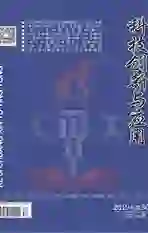断层破碎带钻孔灌注桩施工浮笼原因及应对措施探究
2019-11-10刘健代治强张富荣侯威
刘健 代治强 张富荣 侯威



摘 要:文章为了探究断层破碎带钢筋浮笼问题与特殊地层、混凝土浇筑速度、级配之间的关系。以贵阳花溪某项目B地块为背景,通过对整个B地块钻孔灌注桩施工过程的记录和总结,发现由于该地块破碎地层的沉渣厚度控制难度大,发生浮笼问题的概率也明显大于其他地块;混凝土浇筑速度过快、间隔时间较长等是造成浮笼问题的重要原因;同时现场通过液压机扭转起压式施工可有效减缓浮笼问题,将漏斗浇筑改为泵车浇筑也可明显降低浮笼问题发生的概率。其次,施工工序安排不妥,会间接加大钻孔灌注桩施工难度,在穿插工序安排中应尽量避免已建建筑对后续钻孔灌注桩施工造成的影响。
关键词:断层破碎带地层;钻孔灌注桩;钢筋浮笼
中图分类号:TU473.14 文献标识码:A 文章编号:2095-2945(2019)30-0134-03
Abstract: The purpose of this paper is to explore the relationship between the problem of steel cage in fault fracture zone and special strata, concrete pouring speed and gradation. Based on the background of the B block of a project in Huaxi, Guiyang, through the record and summary of the construction process of the bored cast-in-place pile in block B, it is found that the probability of floating cage problem is obviously higher than that of other plots because of the difficulty of controlling the thickness of sediment in the broken strata of the block, and the concrete pouring speed is too fast and the interval time is long, which is the important cause of the floating cage problem. At the same time, the problem of floating cage can be effectively alleviated by torsional lifting construction of hydraulic press, and the probability of floating cage problem can also be obviously reduced by changing funnel pouring into pump truck pouring. Secondly, the improper arrangement of the construction process will indirectly increase the difficulty of the construction of the bored pile, and the influence of the built building on the subsequent construction of the cast-in-place pile should be avoided as far as possible in the arrangement of the interslotting process.
Keywords: fault fracture zone strata; bore hole cast; floating cage
引言
現阶段,钻孔灌注桩在建设工程施工中已广泛应用,除高层建筑外,许多商业住宅都采用钻孔灌注桩作为建筑物基础形式,即使施工工艺已较为成熟并普遍使用,但施工过程中仍然存在难以攻克的难题。其中浮笼问题是钻孔灌注桩施工中常见的问题之一,也是未完全解决的难题之一。本文以贵阳花溪某项目B地块为例,该地块地质条件特殊,桩基持力层为断层破碎带地层,现场施工中浮笼问题较为明显,频繁的浮笼不仅延误了工期,导致后期工程未能按时交付,而且浪费极大人力财力,造成了无谓的经济损失。因此,在大数据时代,针对具体问题具体研究,可改善同类工程中遇到的钢筋笼浮笼问题,建立施工问题数据库,将为施工带来很多共享资源和可借鉴的经验。
1 工程案例
作者对贵阳花溪某项目B地块部分钻孔灌注桩施工过程进行了记录和统计,结果表明,该地块的钻孔灌注桩出现浮笼问题概率远大于其他项目,且常出现一根桩多次浮笼的现象。
1.1 工程概况
拟建“花溪某项目B地块桩基工程”位于贵阳市花溪区区政府以南,贵州城市职业学院以北,北侧紧邻明珠大道,东侧紧邻田园中路,南侧紧邻122县道,其中桩基直径φ1.2m(地下室)、φ1.5m(地下室)、φ1.8m(主楼)不等,均为大孔径桩,孔深设计15.0m到24.0m不等。
1.2 场地地质情况
根据对拟建场区勘察资料描述,拟建场地位于贵阳向斜南端西翼,下伏基岩为三叠系安顺组(T1a)中厚层白云岩。岩层产状倾向80~100°、倾角40~50°。并且现场地质资料表明,B地块有一近南北走向的逆断层穿过,倾向东,倾角35°,本次勘察选用下部中风化白云岩层为持力层,受断层破碎带的影响,节理裂隙较发育,泥质充填,岩芯呈沙状,(钻探碎块状占比20%,旋挖钻岩芯碎块状占比50%),岩芯采取率50%~55%易埋钻,岩质差,遇水垮塌,偶夹碎块状岩块,呈灰白色。工程场区地面以下 40m深度范围内地层按其沉积年代及工程性质可分为杂填土层、可塑红粘土、软塑红粘土、强风化白云岩、中风化白云岩,具体各土层岩性及分布特征概述如下:
